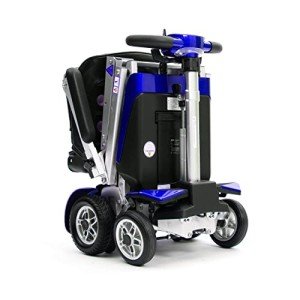Mobility Scooters: A Comprehensive Guide
Mobility scooters have actually ended up being an essential mode of transportation for many individuals dealing with mobility challenges. This article explores the different facets of mobility scooters, including their types, benefits, functions, and a guide for potential buyers.
Understanding Mobility Scooters
Mobility scooters are electrically powered gadgets created for people with limited mobility. They supply a method of transportation for individuals who may have trouble walking however still wish to retain their independence. They come in different designs and functions to accommodate a wide variety of needs.
Types of Mobility Scooters
Mobility scooters can usually be classified into 3 main types:
| Type | Description | Best For |
|---|---|---|
| Compact Scooters | These are small and lightweight, perfect for indoors and short journeys. | Users with limited storage area or those who travel frequently. |
| Mid-size Scooters | A balance between mobility and stability, suitable for both indoor and outside usage. | Those who need to cover a variety of terrains. |
| Durable Scooters | Big and robust, created for rugged outside usage and much heavier individuals. | Users requiring extra weight capacity or going off-road. |
Secret Features of Mobility Scooters
The choice of mobility scooter typically depends on the features that align with specific needs. Here are some of the crucial features to think about:
- Weight Capacity: Mobility scooters come with various weight limitations. buying a mobility scooter is essential to select a scooter that can adequately support the user's weight.
- Range: The distance a scooter can take a trip on a single charge varies. Depending upon user requirements, one might select scooters with a series of approximately 40 miles.
- Speed: Most mobility scooters can reach speeds between 4 to 8 miles per hour. Consider what speed is comfortable and safe for the designated environment.
- Turning Radius: A compact turning radius is important for indoor use, permitting simpler navigation in tight areas.
- Battery Type: The kind of batteries used can affect the scooter's efficiency. Lead-acid and lithium-ion batteries are the most typical.
Advantages of Using Mobility Scooters
The benefits of mobility scooters extend beyond simply transportation. Some key advantages consist of:
- Independence: Users can browse their environment without depending on caretakers, promoting self-reliance and self-confidence.
- Health Benefits: Using a scooter can encourage outside activity, causing physical and psychological health improvements by decreasing sensations of seclusion.
- Convenience: Scooters can easily be operated in various environments, whether inside your home, in shopping center, or outdoors.
Crucial Considerations When Buying a Mobility Scooter
When acquiring a mobility scooter, several considerations can help guarantee that you select the right design:
Assess Individual Needs:
- Mobility level: Consider just how much assistance the individual will require.
- Variety of use: Determine where the scooter will primarily be used (inside, outdoors, on rough terrains, and so on).
Test Drive:
- Always test drive numerous models to discover an appropriate fit. Pay attention to comfort, ease of steering, and the scooter's responsiveness.
Review Safety Features:
- Look for scooters with sufficient security functions like lights, indicators, and anti-tip designs.
Inspect Warranty and Service Options:
- A dependable guarantee and offered service choices are vital for long-term usage.
FAQs about Mobility Scooters
1. How fast do mobility scooters go?Mobility scooters normally have speeds ranging from 4 to 8 mph, with a lot of developed for safety rather than high-speed travel. 2. Exist weight constraints on mobility scooters?Yes, mobility
scooters feature specific weight limitations, typically varying from
250 lbs to over 500 pounds, depending upon the model. 3. Can mobility scooters be utilized indoors?Certain models, especially compact scooters, are particularly developed for
indoor use and are much easier to steer in tight areas. 4. How frequently do the batteries need to be replaced?Battery life can vary based upon usage, however generally, with correct care, batteries may last between 1 to 3 years before needing replacement
. 5. Are mobility scooters covered by insurance?Coverage can vary, however some insurance coverage strategies, including Medicare and Medicaid, may cover part of the expense. It's recommended to examine with specific insurance providers. Mobility scooters act as a
valuable tool for numerous individuals, allowing them to keep
their liberty and self-reliance. By understanding the different types and functions of mobility scooters, people can make informed choices tailored to their specific requirements.
Whether utilized for errands, mingling, or leisurely activities, mobility scooters can boost the lifestyle for those with mobility limitations. Investing in a mobility scooter is a choice that can significantly affect a person's everyday life. For that reason, people need to thoroughly assess their options and select a model that best lines up with their way of life and mobility requirements
.

